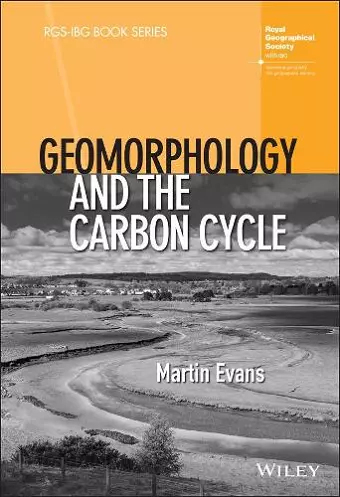Geomorphology and the Carbon Cycle
Format:Hardback
Publisher:John Wiley & Sons Inc
Published:3rd Mar '22
Should be back in stock very soon
This hardback is available in another edition too:
- Paperback£24.99(9781119393252)

The first systematic examination of the role of geomorphological processes in the cycling of carbon through the terrestrial system.
- Argues that knowledge of geomorphological processes is fundamental to understanding the ways in which carbon is stored and recycled in the terrestrial environment
- Integrates classical geomorphological theory with understanding of microbial processes controlling the decomposition of organic matter
- Develops an interdisciplinary research agenda for the analysis of the terrestrial carbon cycle
- Informed by work in ecology, microbiology and biogeochemistry, in order to analyse spatial and temporal patterns of terrestrial carbon cycling at the landscape scale
- Considers the ways in which, as Humanity enters the Anthropocene, the application of this science has the potential to manage the terrestrial carbon cycle to limit increases in atmospheric carbon
‘An outstanding and timely book, which claims centre stage for geomorphology in an analysis of one of the key themes of Earth System Science - the global carbon cycle. Professor Evans writes persuasively and thoughtfully, weaving together geomorphic theory with a broad-ranging review of empirical evidence to produce a convincing perspective on current trends as well as an agenda for future research.’
Heather A. Viles, Professor of Biogeomorphology and Heritage Conservation, University of Oxford and President, British Society for Geomorphology
'Carbon is moving all around us. Some of these flows of carbon are linked to physical processes that weather, erode and shape the landscape, requiring us to make the link between geomorphology and biogeochemistry to understand them. This timely book, written by an expert in the role of erosion on peatland soil, details how geomorphic processes impact the carbon cycle. It considers this over millions of year timescale, up to the present day, where humans have modified these carbon transfers. It would make an excellent introduction to the subject for courses in geography and earth sciences, while also providing rich detail and case-studies of erosion and carbon from mountainous uplands to coastal ecosystems for advanced researchers.'
Professor Robert Hilton, Department of Geography, Durham University
ISBN: 9781119393214
Dimensions: 229mm x 152mm x 22mm
Weight: 624g
304 pages